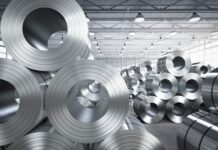
Quality is one of the key challenges for manufacturers, with product failures, recalls, and scrap being an integral part of the industry. These factors can have a detrimental impact on the business’s bottom line, customer trust, and brand reputation. For this reason, most manufacturers are willing to go the extra mile to track and solve quality issues.
According to statistics, the cost of poor quality (COPQ) for an average business is nearly 20% of sales. That’s a reason to worry, regardless of the size and scale of the business. If you run a company generating $10 million in revenue, you may end up wasting $2 million in addressing poor quality. The numbers are painful even for small businesses losing thousands instead of millions.
A robust quality assurance and control process is your first line of defense against these issues. It ensures efficient production lines, high manufacturing rates, less downtime, and a minimal loss of productivity. While QA and QC are preventive measures, adopting new technologies is a proactive approach that gives you a head start with improving manufacturing quality.
Laser processing technology has emerged as a game-changing innovation for the industry in the last decade. Let us explain how it can enhance quality without compromising production speed and cost.
The Use of Laser Processing in Manufacturing
Manufacturing technology is a buzzword today. When it comes to production quality, the industrial laser is among the most popular innovations in the segment. Industrial laser processing solutions pave the way for precision manufacturing in several ways, from laser marking to texturing, welding, cutting, cleaning, micromachining, and heat treatments.
Novanta Photonics notes that manufacturers in all verticals must leverage laser tools and technologies to get the benefits of quality, versatility, and control required for meeting their manufacturing goals. The technology works in several domains, from automotive to consumer electronics, FMCG, pharmaceuticals, aerospace, and 3D printing.
Quality Benefits of Laser Processing Technology
Embracing innovation is always challenging because it involves investment. Further, you must have a valid reason to give up the traditional processes and switch to laser manufacturing. If you check the numbers, you will probably consider it a savvy investment.
The size of the global laser processing market was $20.64 billion in 2022 and is projected to reach $ 44.09 billion by 2032, with a compound annual growth rate (CAGR) of 7.89% from 2023 to 2032.
Beyond the impressive growth stats, the quality benefits of laser processing technology make it worth embracing. Let us discuss them in detail.
Precision
High-precision tools are needed to manufacture products requiring strict manufacturing tolerances. These precision expectations have always been challenging for the traditional CNC machines used for production. Even worse, stress and wear impact the accuracy of machines enough to affect the end product quality. Laser tools address the precision concern because of their accurate and consistent performance.
Here are the exceptional features they offer:
- No contact means there is no wear or mechanical stress on the tool, which leads to consistent quality and minimal need for maintenance.
- Mechanical parts are lightweight as laser optical tools use electromagnetic motors that excel in precision.
- Industrial lasers can process materials with spot-size precision, allowing high-resolution surface processing.
Flexibility
Flexibility is another factor that makes laser processing a quality-focused technology. Laser technology is agile, making it capable of matching the evolving quality expectations of the manufacturing sector. Since these tools are available in a variety of optical configurations, they can be fine-tuned for diverse applications.
The best part is that laser software handles these configuration changes, leaving no chance of human error. Laser programming can be aligned with different shapes, lengths, depths, and speeds, which is hardly possible with manual changeover.
Repeatability
Besides precision and flexibility, repeatability is another factor that ensures consistent manufacturing quality. Production processes require high repeatability, specifically when it comes to bulk manufacturing. Laser processes offer great repeatability in more than one way.
- Since laser systems are contactless, business owners need not worry about wear and tear. Less wear and tear translates into a longer lifespan and consistent quality over time.
- Laser technology is made for automation because it requires minimal manual intervention. Manufacturers can rely on it to manage repetitive processes without quality gaps and issues.
Conclusion
According to McKinsey, quality manufacturing need not be about spending a fortune on the improvement of tools and processes. You can rely on laser processing to gain a quality advantage without breaking the bank. Even as the innovation spells an initial investment for a manufacturer, it is worthwhile because of the extensive quality benefits it offers for the long haul.
Must Read: How to Go Solar: A Homeowner’s Guide


































































